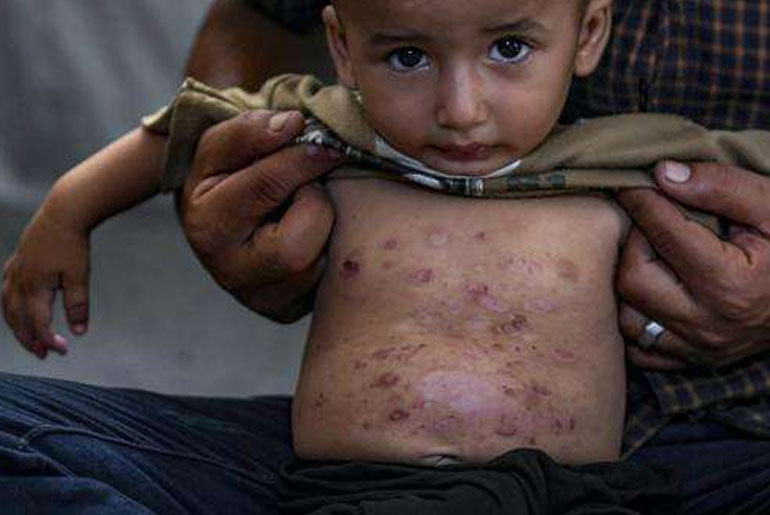In Gaza, an alarming surge in skin diseases has overwhelmed medical facilities amid dire living conditions. At Nasser Hospital, a constant stream of children and their anxious parents arrives daily with various skin ailments. The distress is evident as a toddler with a blue hair bow sobs from red and white spots that have spread across her body, while another child suffers from open sores due to relentless scratching.
The root of these skin issues, health officials say, is the appalling conditions in Gaza’s overcrowded tent camps. With hundreds of thousands of displaced Palestinians living in squalid and unsanitary conditions, the combination of summer heat and the collapse of sanitation systems has exacerbated the situation. Pools of open sewage are common, and the lack of clean water and proper hygiene supplies contributes significantly to the spread of diseases.
According to the World Health Organization, Gaza is grappling with over 103,000 cases of lice and scabies and 65,000 cases of skin rashes. The United Nations Development Program reports more than 1 million cases of acute respiratory infections, over 500,000 cases of acute diarrhea, and over 100,000 cases of jaundice since the conflict escalated.
Living conditions in the tent camps are described as extremely unsanitary. Many families, like Munira al-Nahhal’s, struggle with inadequate water and sanitation, leading to widespread rashes among children. The lack of basic hygiene products, such as soap and shampoo, compounds the problem. Some residents use dirty water from the Mediterranean or wear the same clothes repeatedly due to the lack of facilities for washing.
The humanitarian situation is exacerbated by the slow distribution of aid. Relief supplies, including essential items like soap and medicine, are dwindling due to the ongoing conflict and the dangers faced by aid workers. Israel’s military operations have severely restricted the movement of relief trucks, further impeding the delivery of necessary resources.
The collapse of waste management systems has created additional health hazards. The UN Development Program notes that Gaza’s pre-war landfills are inaccessible, leading to the establishment of numerous informal dumping sites, some of which are hazardous pools of human waste and garbage.
The dermatology department at Nasser Hospital is overwhelmed with the influx of patients. Scabies and lice are at epidemic levels, but other infections, including fungal, bacterial, and viral, are also rampant. Simple infections can become severe due to the unsanitary conditions, leading to complications like kidney failure from untreated bacterial infections.
Parents in Gaza are left to cope with the agony of their children suffering from persistent skin conditions. Despite receiving creams and ointments, the lack of proper hygiene facilities means that these treatments often offer only temporary relief. The pervasive filth and the constant presence of flies exacerbate the problem, leaving families in a dire situation with limited resources to address their health needs.
Disclaimer:
The information contained in this article is for educational and informational purposes only and is not intended as a health advice. We would ask you to consult a qualified professional or medical expert to gain additional knowledge before you choose to consume any product or perform any exercise.








